Robert Gibbings - St Brendan and the Sea Monsters
Robert Gibbings - St Brendan and the Sea Monsters
In 1949 Robert Gibbings created a series of wood engravings for the book Beasts and Saints. Here Elric Hooper reads the passage that this work illustrated.
Related reading: The Golden Age
Collection
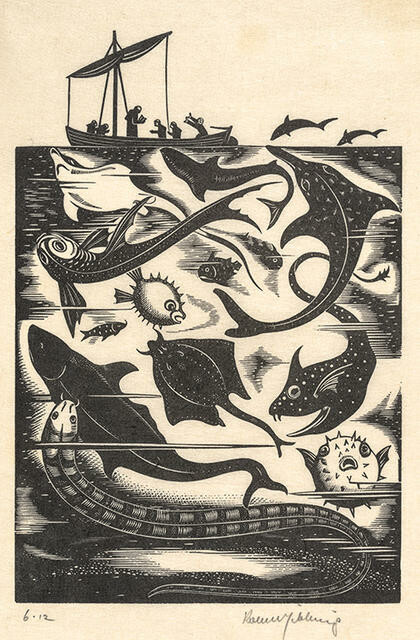
Robert Gibbings St Brendan and the Sea Monsters
Robert Gibbings was an early convert to wood engraving and quickly appreciated its qualities. He once wrote:
Discipline in art: was that what I’d come to London for? Impressionism was what I thought I was after. I couldn’t think what all this hard labour on wood was about. There was no tradition at the time; it seemed a lot of finicky gouging to get a few lines that might have been obtained more easily with a pen or brush. But slowly a love of the wood came upon me. I began to enjoy the crisp purr of the graver as it furrowed the polished surface. I began to appreciate the cleanness of the white line that it incised: even the simplest silhouettes had an austere quality, a dignity, that could not be achieved by other means. Clear, precise statement, that was what it amounted to. Near enough wouldn’t do: it had to be just right.
The Golden Age 18 December 2015 – 1 May 2016
An illustration from 'Beasts and Saints', translated by Helen Waddell, published by Constable, 1949.
Notes
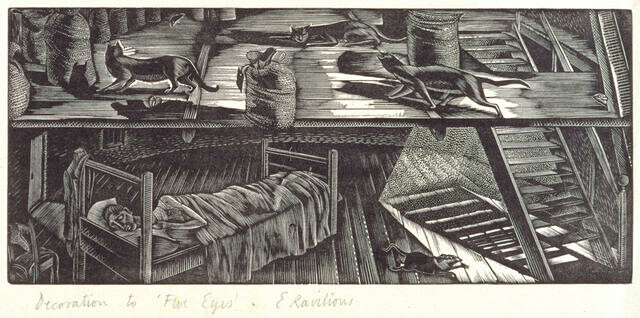
Five eyes by Eric Ravilious
This article first appeared as 'Artist captured poetry in wood carving' in The Press on 11 November 2014.
Notes
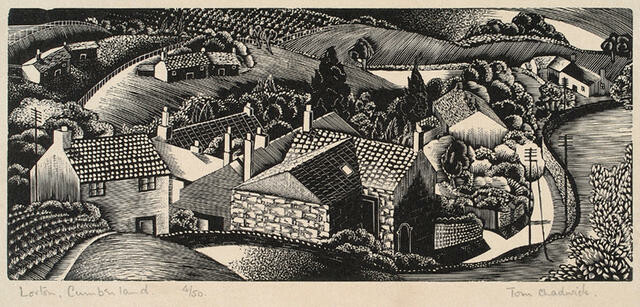
Lorton, Cumberland by Tom Chadwick
This article first appeared as 'Wood engraving artist finally won recognition' in The Press on 27 June 2014.
Notes
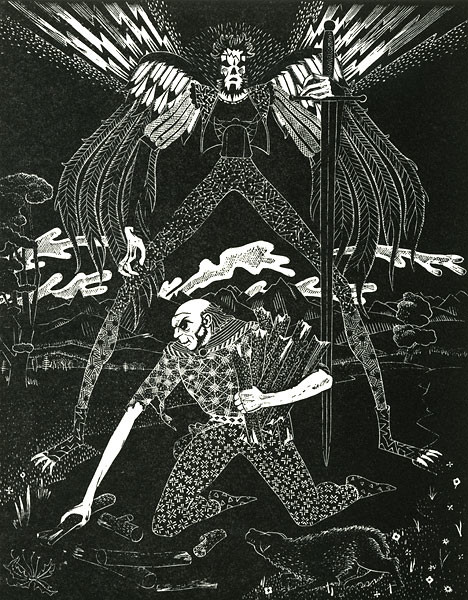
Death and the woodcutter by Leo Bensemann
This article first appeared as 'Death mastered' in The Press on 28 March 2013.
Notes
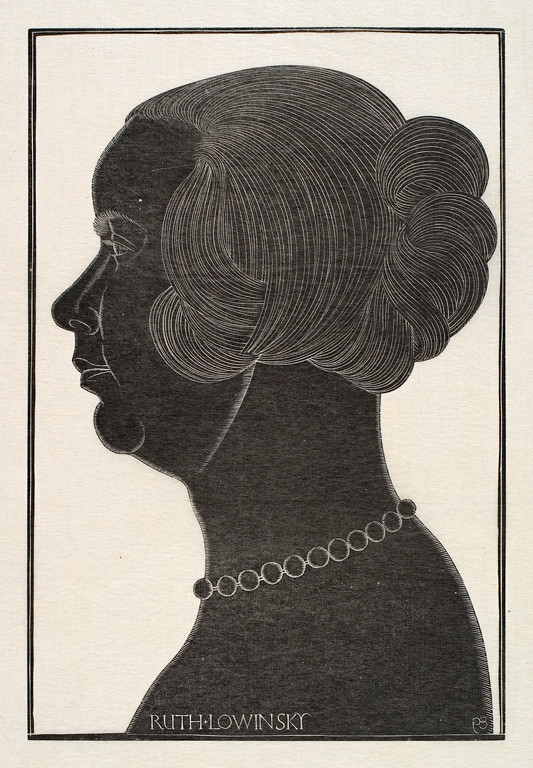
Ruth Lowinsky by Eric Gill
This article first appeared as 'An oblique profile' in The Press on 12 July 2013.
Notes
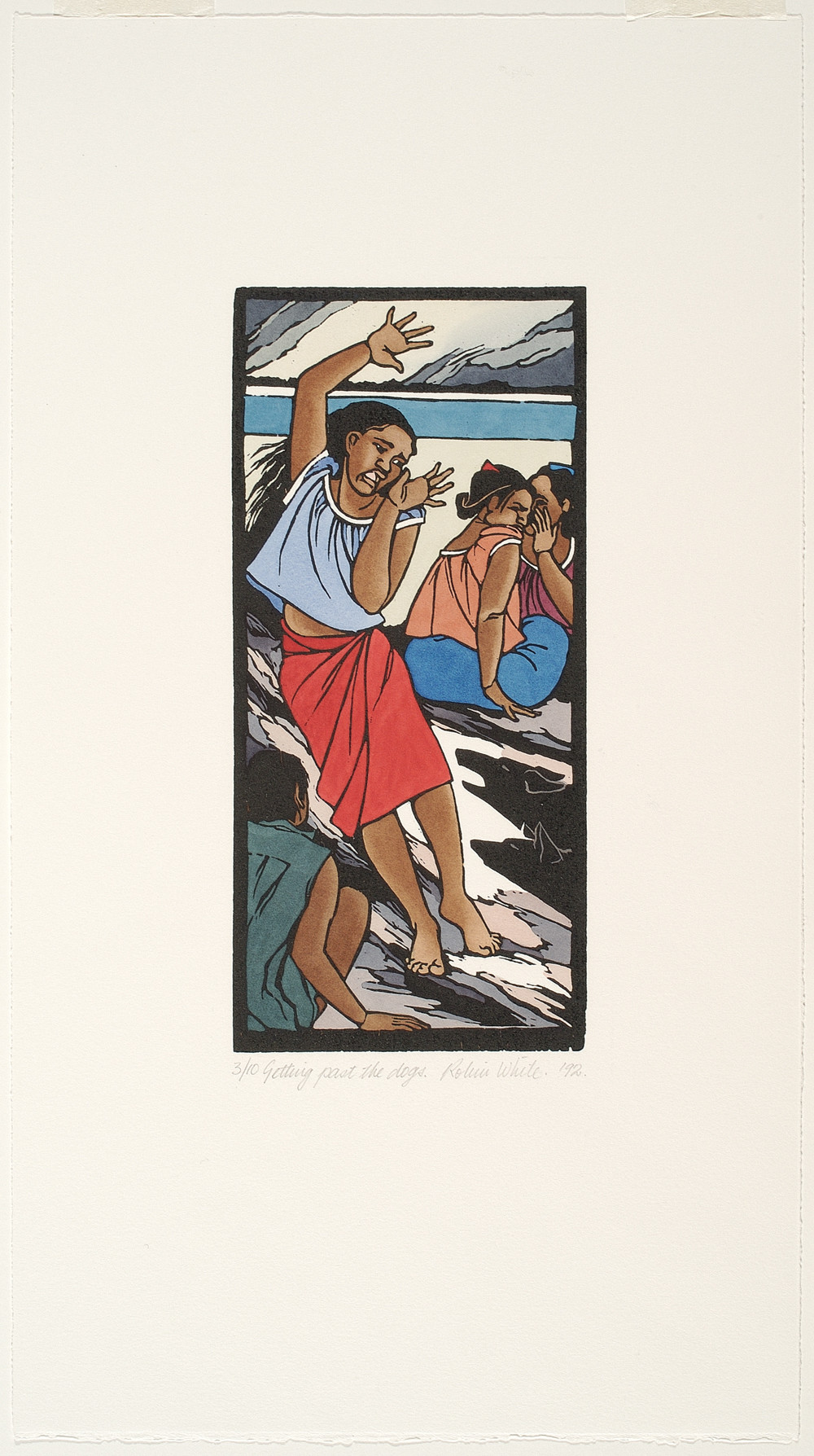
The Print Collection
If the question "what is the largest individual collection area numerically held by the Gallery?" was to be asked, the answer would have to be the Works on Paper collection, within which are 2145 original contemporary and historical prints, the earliest dating from the second half of the fifteenth century.
Notes
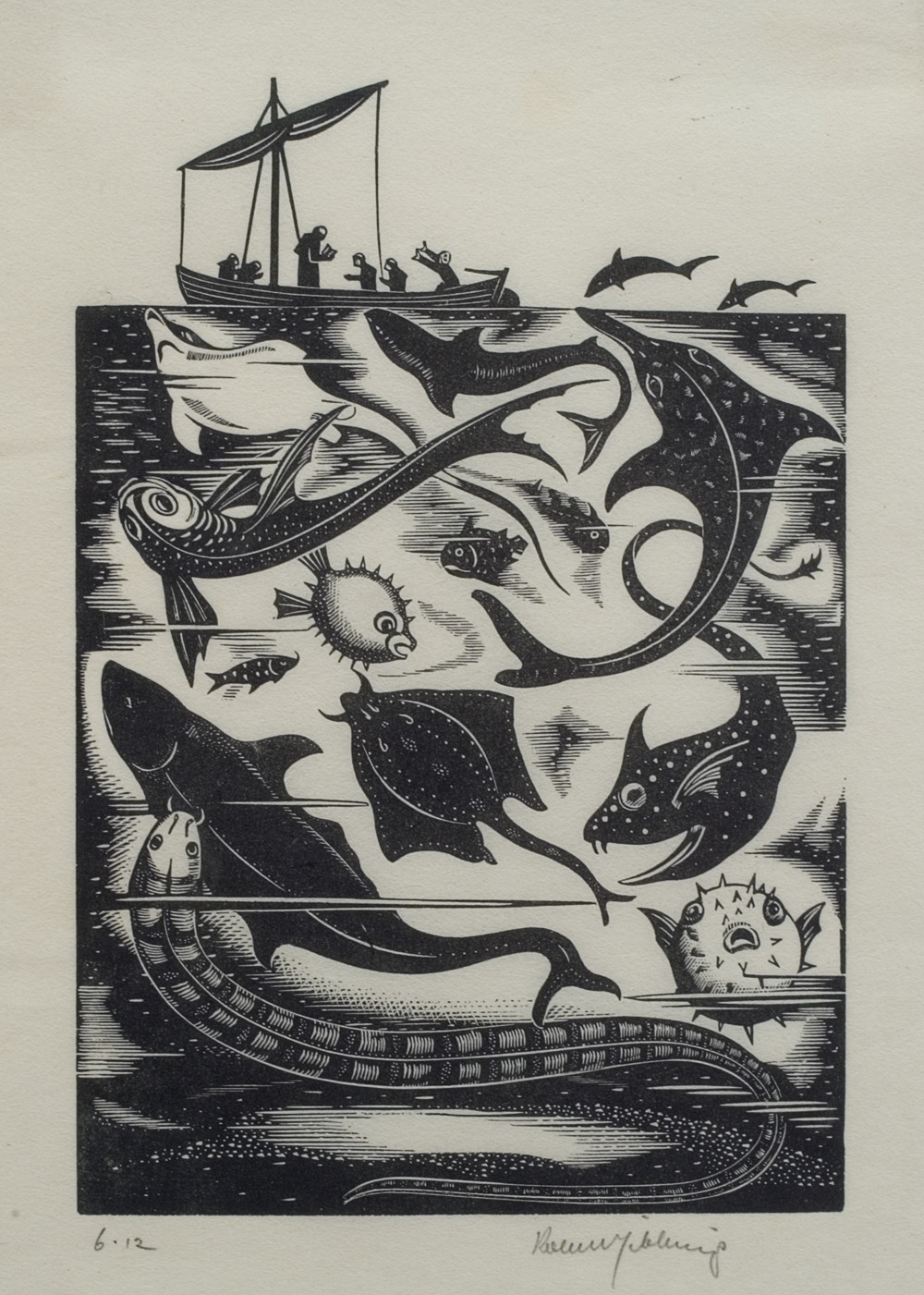
St Brendan and the Sea Monsters by Robert Gibbings
This article first appeared in The Press on 14 December 2005
At just 14 cm tall, the exquisite St Brendan and the Sea Monsters by Irish-born Robert Gibbings (1889-1958) is one of the smallest works in Christchurch Art Gallery's collection, but carries with it some of the largest tales. A rhythmic composition of swirling sea serpents, stingrays and sharks, this finely-crafted woodcut print tells the story of 6th century Irish explorer-monk St. Brendan, or Brendan the Navigator, whose recorded travels were an important part of medieval European folklore, and which continue to fascinate.
Article
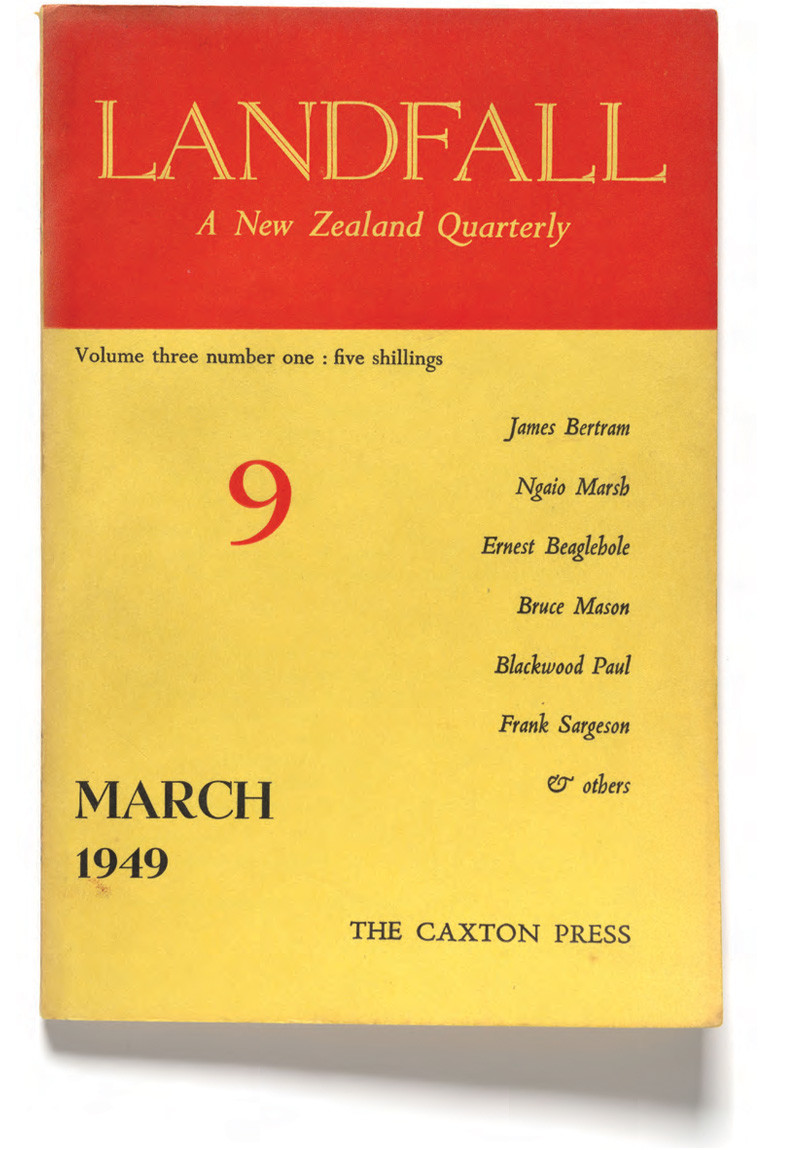
Tomorrow, Book, Caxton Press, Landfall
In the decades before and after the Second World War, Christchurch experienced a remarkable artistic efflorescence that encompassed the visual arts, literature, music, theatre and the publishing of books and journals. And the phenomenon was noticed beyond these islands. For instance, in his 1955 autobiography, English publisher and editor of Penguin New Writing and London Magazine, John Lehmann, wrote (with a measure of exaggeration, perhaps) that of all the world’s cities only Christchurch at that time acted ‘as a focus of creative literature of more than local significance’.
Collection
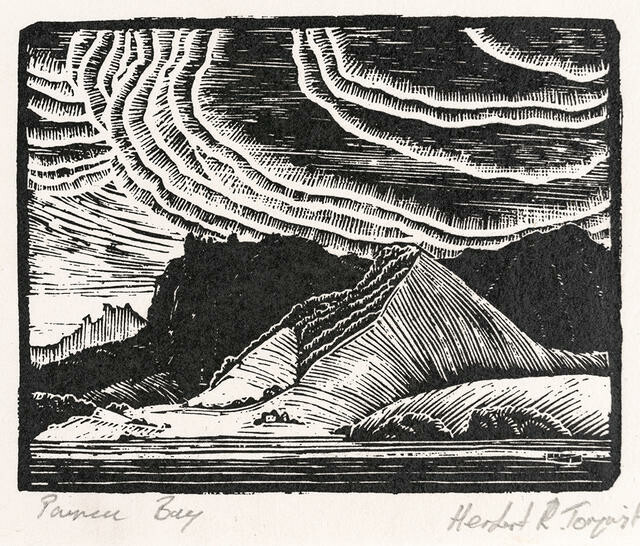
Bert Tornquist Parua Bay
Herbert Tornquist studied under Edward Friström at the Elam School of Art between 1910 and 1915 and, after time spent in Canada, England and the United States, settled back in Tāmaki Makaurau Auckland where he eventually established a photography studio in 1925. Bert became one of the country’s most successful portrait photographers at the time, and was also committed to his printmaking practice. He was an active member of the Quoin Club, and his views of the landscapes around Auckland, Te Tai Tokerau Northland and Te Tara-o-te-Ika a Māui Coromandel from this time are refreshingly energised, using simple yet striking contrasts of black and white tones.
Ink on Paper: Aotearoa New Zealand Printmakers of the Modern Era, 11 February – 28 May 2023
Collection

E. Mervyn Taylor The Magical Wooden Head
New Zealand’s most respected wood engraver, E. Mervyn Taylor remains renowned for his delicately engraved and beautifully designed prints. He was drawn to Māori mythology for much of his subject matter, in particular George Grey’s collected legends published as Polynesian Mythology in 1855.
In this work he depicts the myth of the Ma- ori sorcerer Hakawau defeating a carved magical wooden head whose stare will cause death to anyone who looks at it. As with his contemporary British artists, Taylor’s wood engravings were also used for illustrative purposes, and in 1946 he produced a limited edition book of his wood engravings through Christchurch’s Caxton Press – which can be seen elsewhere in the exhibition.
The Golden Age 18 December 2015 – 1 May 2016
'A book of wood engravings' by E Mervyn Taylor is in the Robert and Barbara Stewart Library and Archives and can be viewed by appointment
Collection

Eileen Mayo Skaters
Two prints from early in Eileen Mayo’s career show the strength of her natural ability. Eileen was nineteen and studying at the Central School of Arts and Crafts, London, when she made the wood engraving Skaters. She made Turkish Bath a few years later in response to an invitation to put work in the Second Exhibition of British Lino-Cuts at the Redfern Gallery, London. Her invitation came from Claude Flight, the linocut’s principal champion, who reportedly instructed her on the technique over the telephone. She had met Flight, a teacher at the Grosvenor School of Art, while working there in 1929 as a life-class model.
(Perilous: Unheard Stories from the Collection, 6 August 2022- )